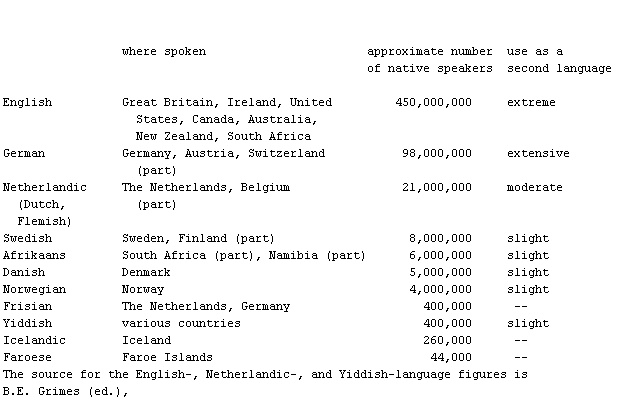- Modern Standard Germanic Languages, Table
-
▪ TableTable 14: Modern Standard Germanic Languageswhere spoken approximate number use as aof native speakers second languageEnglish Great Britain, Ireland, United 450,000,000 extremeStates, Canada, Australia,New Zealand, South AfricaGerman Germany, Austria, Switzerland 98,000,000 extensive(part)Netherlandic The Netherlands, Belgium 21,000,000 moderateFlemish)Swedish Sweden, Finland (part) 8,000,000 slightDanish Denmark 5,000,000 slightNorwegian Norway 4,000,000 slightFrisian The Netherlands, Germany 400,000 —Yiddish various countries 400,000 slightIcelandic Iceland 260,000 —Faroese Faroe Islands 44,000 —The source for the English-, Netherlandic-, and Yiddish-language figures isB.E. Grimes (ed.),
 Ethnologue (1992); other figures, except Frisian, are fromvarious official country sources.
Ethnologue (1992); other figures, except Frisian, are fromvarious official country sources.* * *
Universalium. 2010.
